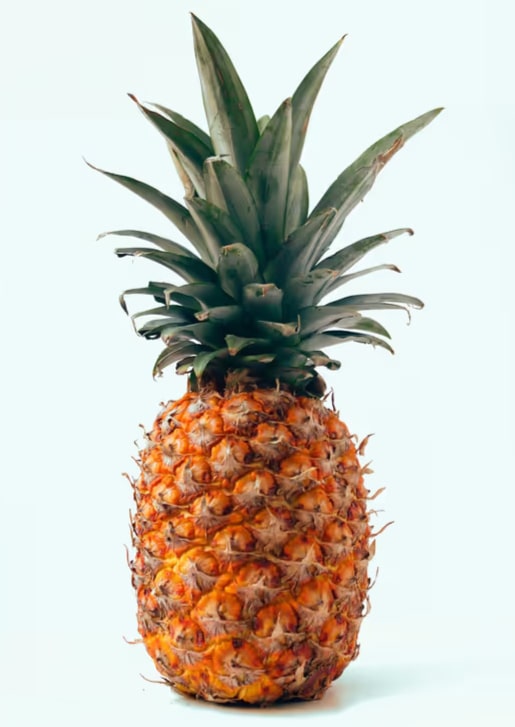Pineapple - Antigua And Barbuda National Fruit
Fruit Information

Culturally, pineapples have held symbolic significance since their introduction to Europe, representing hospitality, wealth and exotic luxury in Western societies. The fruit features prominently in tropical cuisines, traditional medicine systems and cultural celebrations throughout its native and adopted regions. Modern applications extend beyond food consumption to include cosmetic products utilizing pineapple enzymes, dietary supplements containing bromelain and industrial uses for pineapple fiber and waste products. Sustainable initiatives focus on utilizing entire pineapple plants, including leaves for fiber production and crowns for replanting, while supporting smallholder farmers and promoting environmentally responsible cultivation practices that preserve tropical ecosystems.
| Fruit Name | Pineapple |
| Scientific Name | Ananas Comosus |
| Country | Antigua And Barbuda |
| Continent | North America |
| Fruit Season | Year-round |
| Fruit Color | Golden-Yellow |
| Fruit Size | Large |
| Fruit Taste | Sweet-Tangy |
| Fruit Origin Region | South America |
| Designation Year | 1981 |
| Peak Month | March-July |
| Economic Importance | Tourism and Export |
| Cultural Use | Hospitality symbol, Caribbean cuisine |
| Processing Type | Fresh, Juice, Canned |
| Fruit Shape | Cylindrical with crown |
| Texture | Fibrous and Juicy |
| Nutritional Value | Vitamin C, Bromelain, Manganese |
| Storage Type | Room temperature when ripe |
| Harvest Method | Hand cutting |
| Shelf Life | 3-5 days |
| Climate Type | Tropical |
| Soil Type | Well-drained acidic |
| Water Requirement | Moderate |
| Tree Height | 1-1.5 meters |
| Flowering Season | Year-round |
| Fruiting Age | 18-24 months |
| Yield Per Tree | 1-2 fruits |
| Export Countries | Costa Rica, Philippines, Thailand |
| Import Countries | USA, Canada, Europe |
| Medicinal Use | Digestive aid, Anti-inflammatory |
| Festival Association | Caribbean festivals, hospitality |
| Historical Significance | Symbol of Caribbean hospitality |
| Alternative Names | Ananas, Pina |
Detailed Information
Cultivation & Origin
Pineapple cultivation spread throughout tropical regions following European colonization, with major production centers now established in Costa Rica, Philippines, Thailand, Indonesia and Hawaii. The fruit requires specific growing conditions including warm temperatures year-round, well-drained soils and adequate rainfall or irrigation. Modern pineapple production involves sophisticated agricultural techniques including tissue culture propagation, precision fertilization, growth regulation and mechanized harvesting systems. The industry has developed various cultivars optimized for different markets, including fresh consumption, juice processing and canning operations.
Nutritional Benefits
Nutritionally, pineapples offer exceptional health benefits due to their unique enzyme content and rich vitamin profile. Bromelain, found primarily in the fruit's core and stem, aids in protein digestion, reduces inflammation and may have therapeutic effects in treating conditions like osteoarthritis and sinusitis. The high vitamin C content supports immune function and collagen synthesis, while manganese is essential for bone development and wound healing. Pineapples also contain antioxidants like vitamin A and various flavonoids that help protect against oxidative stress and support overall health. The fruit's natural enzymes can aid in digestion and may help reduce bloating and digestive discomfort.
Economic & Agricultural Significance
The global pineapple industry has evolved into a sophisticated supply chain involving large-scale plantations, processing facilities and international distribution networks. Costa Rica leads global fresh pineapple exports, while Thailand dominates canned pineapple production. The industry faces challenges including sustainable farming practices, fair trade concerns and environmental impacts of large-scale monoculture plantations. Innovation focuses on developing new varieties with improved disease resistance, enhanced nutritional content and reduced environmental footprint. Processing technologies have advanced to create various value-added products including juices, dried fruit and bromelain extracts for pharmaceutical and food applications.
Cultural & Modern Applications
Culturally, pineapples have held symbolic significance since their introduction to Europe, representing hospitality, wealth and exotic luxury in Western societies. The fruit features prominently in tropical cuisines, traditional medicine systems and cultural celebrations throughout its native and adopted regions. Modern applications extend beyond food consumption to include cosmetic products utilizing pineapple enzymes, dietary supplements containing bromelain and industrial uses for pineapple fiber and waste products. Sustainable initiatives focus on utilizing entire pineapple plants, including leaves for fiber production and crowns for replanting, while supporting smallholder farmers and promoting environmentally responsible cultivation practices that preserve tropical ecosystems.